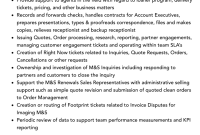How To Become An Air Force Pj – “It’s like these things I’ve done wrong, or at least confused, funny moments are the only things I remember.”
Left, then Master Sgt. Ivan Ruiz, a paramedic from the 56th Rescue Squadron, Royal Air Force Lakenheath, England, smiles after being awarded the Air Force Cross for valor in combat during a ceremony at Hangar Freedom Field in Hurlburt, Fla., Dec. . 17, 2014; right, Master Sgt. When Ivan Ruiz was sent to Afghanistan. (Senior Director Christopher Callaway/U.S. Air Force/courtesy photo)
How To Become An Air Force Pj
Air Force rescuers have braved enemy fire and natural disasters to save soldiers and civilians in grave danger for decades. Amazing bravery is common among the crowd with that kind of mentality, which is why it is all the more surprising that one rescuer who stopped falling after 26 years of work received the title of ‘history’ from other members of the PJ community.
Th Special Tactics Squadron
“Yesterday we said goodbye to Air Force Rescue Chief Sgt. Ivan Ruiz,” wrote the Pararescue Foundation, a non-profit organization dedicated to helping the rescue community and their families, in a Facebook post last month.
“He always talked about the party and the men, not the position and the politics that come with it … he only interfered with the mission of PJ (and got many),” the Foundation wrote in a post covering the retirement ceremony held in honor. Ruiz’s work. .
Ruiz’s most famous mission (so far) took place on December 10, 2013, when he stood outside in the courtyard of a compound in Afghanistan, dodging fire from Taliban fighters so they wouldn’t shoot their wounded comrades lying nearby. . After other members of the group joined the fight, Ruiz treated the injured crew members who survived the raid. PJ received the Air Force Cross, second only to the Air Force and Air Force Medal of Honor.
Although the act was courageous and selfless, it was just one moment in Ruiz’s long life, which he took time to discuss with Task & Purpose last month.
Pararescuers Are Air National Guard’s ‘quiet Professionals’ > National Guard > Article View
Believe it or not, being a pararescueman wasn’t what Ruiz envisioned as a high school student growing up in San Antonio, Texas. At first, he wanted to become an Army Ranger, but a neighbor friend named David who was going through a rescue course at the nearby San Antonio-Lackland Joint Center changed that. When David returned home for the weekend, he told Ruiz about the physical and mental challenges of being one of the best doctors in the world.
“He told me how hard the classes were and how many people failed and that it had to be one of the toughest schools [in the Department of Defense],” Ruiz recalled. “It’s just that — if it’s one of the toughest schools, that’s what I want to try to do.”
Candidates for the Water Technical Training Course in their additional training day held at the Joint Center San Antonio – Medina, Sept. 7, 2017 (Johnny Saldivar/U.S. Air Force)
Ruiz joined the Air Force shortly after graduating high school in 1996. Joining pararescue was difficult as David explained: in fact, Ruiz failed the first rescue training course the first time.
Guard And Reserve Fact Page — Be A Pj
“I was undecided,” he said. “I say that because I have seen 17 and 18-year-olds graduate. So I had absolutely no excuses.”
Sign up for Career and Purpose Today. Get the latest military news, entertainment and tools in your inbox every day.
However, looking back, Ruiz said it’s a good thing he didn’t start, first because he “didn’t deserve it,” and second because he became an Air Control Association specialist two years later (TACPs are attached to the frontline units of the Army and Marines to call out air strikes in combat). Ruiz made many close friends and enjoyed his time as a TACP, but in 1998 it was time to give pararescue another shot. He won this round and at the right time, because the Air Force pararescue and the entire U.S. special operations community. you would be very busy.
In December 2001, Ruiz was deployed to Afghanistan in response to the terrorist attacks of September 11. For a young special operator who was retaliating against American civilians at the beginning of a war dominated by special forces, it was a dream come true.
The Air Force Needs More Special Ops Airmen. This Is How It Plans To Get Them
“This was a big meeting, you know? It was amazing to see all my colleagues doing amazing things. In the middle of this war zone,” he said. “At night I met my friend, I went to school with him. And it happened every day, you saw the boys you liked and you did all this training.”
Police in the U.S. Air Force Rescuers, 83rd Expeditionary Rescue Squadron, provide security during a mission Nov. 7, 2012, in Afghanistan (Staff Sgt. Jonathan Snyder/U.S. Air Force)
Full American bases with restaurants, bathrooms, theaters and brasseries that would be seen later in the war were still to come, giving the workplace a “Wild West” feel, Ruiz said, and his own work could be unexpected. . In fact, the PJ’s first target was not an American unit, but a Danish special operations team that needed a rope master as they took the helicopter to the top of the mountain.
“That’s what I did at first, which was crazy to me. I was a kid and that’s the first thing I do, you know?” Ruiz said. “Until today it was normal.”
Air Force Parajumper Requirements United Kingdom, Save 50%
A few years later, Ruiz found himself at the tip of the spear in another country: Iraq. PJ and his team arrived at Bashur Airport, north of the Iraqi city of Erbil, a week before the massive US offensive began in March, 2003. Special forces had captured the airport, but apparently the 173rd Army’s la Anga had no memory. because in a few days they fought in the air over the heads of the group.
“We had to watch this fight go down sitting in lawn chairs, watching these guys fly and fight,” Ruiz recalled.
Like Afghanistan, some of Ruiz’s most memorable memories have less to do with combat and more to do with seeing close friends in unexpected places. One mission tasked PJ with a military search and rescue team to locate a Navy SEAL team in a pond north of Baghdad. Ruiz was surprised to find that the bomber behind the CH-53 plane that took him to the dam was a pilot named Danny who was also a TACP in the past.
“It was really good because we trained together and now we were together every day to give CSAR,” he said.
A Pararescueman (pj) From The 38th Rescue Squadron (rqs), Adjusts His Oxygen Mask Prior To A Static Line Jump, July 24, 2018, At Valdosta, Ga. Pjs Performed Static Line Jumps To Maintain Their Jump
Lo and behold, when the helicopter arrived at the pool to pick up the SEAL team, Ruiz discovered that the Air Force commander attached to the SEALs had also acted as TACP with him and Danny. That’s part of the nature of the Air Force special warfare community, Ruiz said: it’s so small that you’ll run into someone you know.
“We took this group and Tony [the manager] walked in and I was like ‘oh crap!’” PJ recalled. “I’m so happy to see someone I know that we’re hugging, but we’re also trying to get out of there. Meanwhile, Danny’s in the back shooting a .50 cal, but as soon as he’s done he’s looking around and he’s like ‘Tony!’ Now they’re hugging and these SEALs are like ‘what are these guys doing?’ “
As the years passed and the number of deployments increased, Ruiz, who had once been a young boy on his first assignment, was now mentoring young PJs on their first assignments and deployments.
“My whole career, just seeing my peers and young people doing great things, was the most enjoyable part of the experience,” he said.
An Air Force Pj And His Us Navy Seal Counterpart Hauling Wounded Afghan Troopers Up A Hillside After An Engagement. [2,309×1,516]
In December. 10, 2013, at that time Master Sgt. Ruiz was a veteran rescuer who had worked all over the world. In the pre-dawn darkness that night, he and a team of Army Special Forces and Afghan commandos were charged with attacking a heavily fortified fortress in Kandahar province, Afghanistan. It didn’t take long for the attackers to be blamed.
The attack forces split up, and Ruiz and his two colleagues – a Green Beret, and an EOD technician – ended up fighting in a courtyard within a courtyard. At one point, Ruiz got a “bad feeling” inside the cabin and drove his car inside seconds before an armed Taliban fighter came out, he said.
Ruiz shot the fighter, but soon after that two of his teammates fell in front of him, and soon the Taliban fighters were shooting at PJ from the front and back. Instead of seeking cover, Ruiz remained exposed to draw enemy fire from the wounded
How to become an air force pararescue, how to become an air force chaplain, how to become an air force doctor, how to become an air force, how to become an air force jag, how to become an air force nurse, how to become a pj in the air force, how to become an air force sniper, how to become an air force officer, how to become an air force pilot, how to become an air force recruiter, how to become an air force physician


